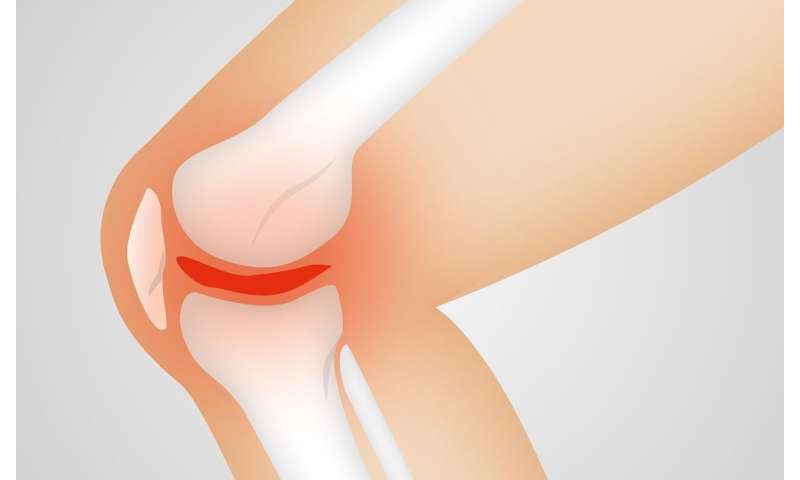
Osteoarthritis is the most common form of arthritis worldwide, affecting more than 300 million people. It causes substantial pain, functional limitations, and disability in patients.
The pain experience in patients with knee osteoarthritis changes over time. People initially experience primarily weight-bearing related pain, such as with jogging and stair-climbing. Over time, the pain becomes more persistent and can flare unpredictably.
To better understand why this change in the pain experience occurs, researchers from the Boston University schools of Medicine (BUSM) and Public Health reviewed data from the Multicenter Osteoarthritis Study about the pain experience of 2,794 older adults with or at risk of knee osteoarthritis. They found that people with more pain sensitization were more likely to suffer from constant and unpredictable pain, rather than just intermittent pain. This study has identified for the first time a potential underlying mechanism in the nervous system responsible for why people experience varying pain patterns with knee osteoarthritis.
“Our findings support the clinical relevance of neurobiological mechanisms that affect the pain experience in knee osteoarthritis, including not only the severity of pain, but whether the pain is intermittent or constant, and whether the pain is unpredictable,” said senior author Tuhina Neogi, MD, Ph.D., professor of medicine and epidemiology at Boston University School of Medicine.
By understanding the different mechanisms that contribute to the pain experience of knee osteoarthritis, healthcare providers can begin to personalize pain management to each patient. For example, if a patient has pain sensitization, therapies that can alter those nervous system signaling pathways may be helpful. This would improve the current ‘one-size-fits-all’ approach, in which each patient is started with the same treatment and then moved on to something else if the first approach did not work.
“By understanding these mechanisms, determining ways to identify those mechanisms in the clinic, and developing treatments to target those mechanisms, we can provide better management options to the millions of people worldwide with osteoarthritis,” said Dr. Neogi.
Source: Read Full Article